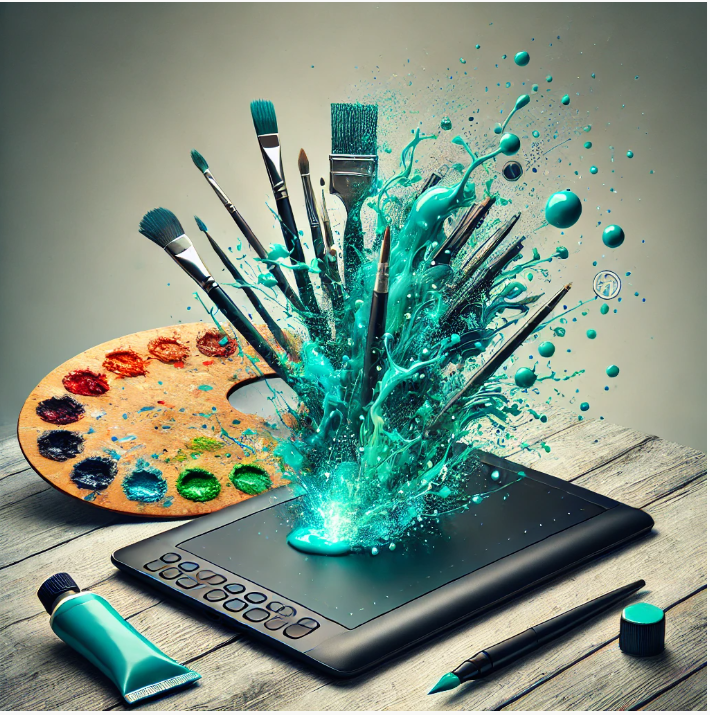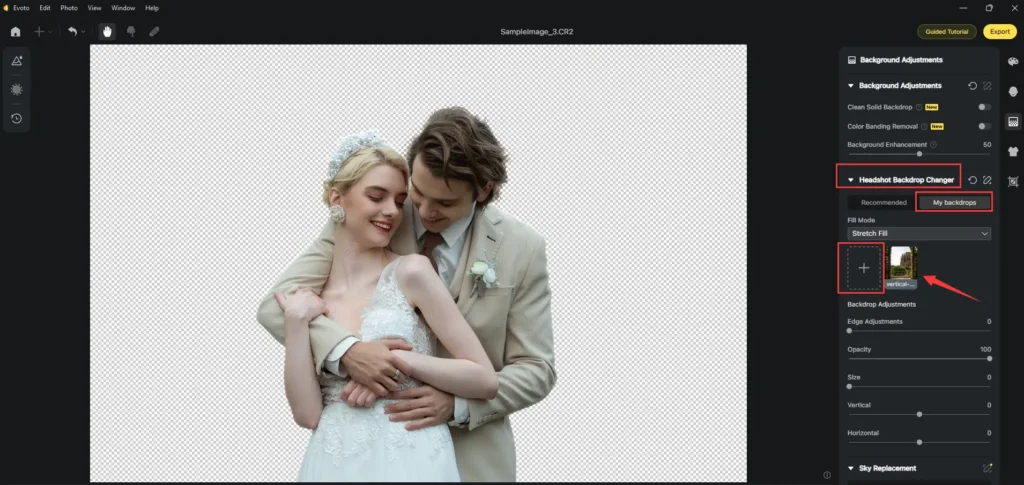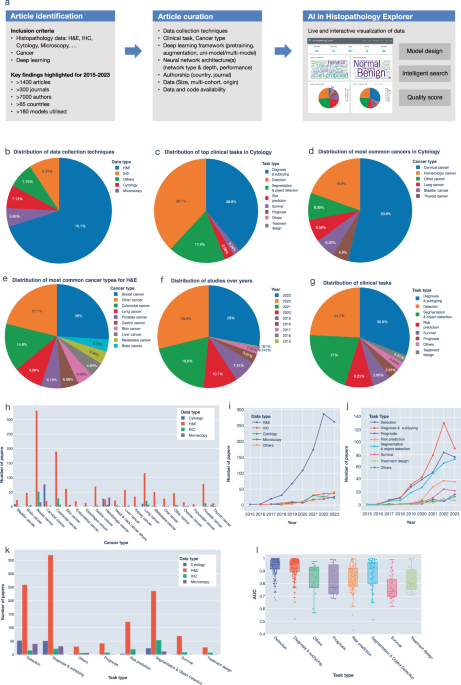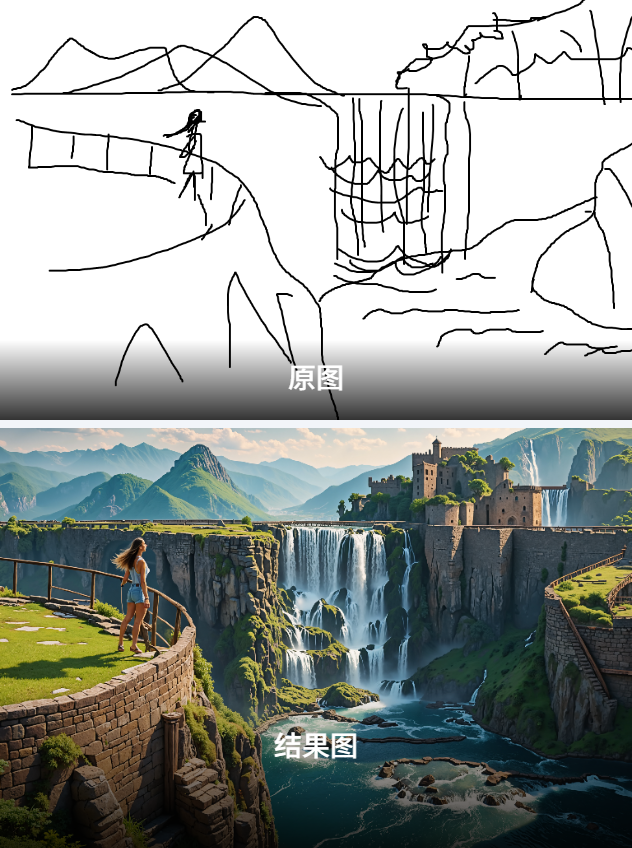Mastering Advanced AI Image Editing
Beyond Generation to Professional Transformation
I've watched AI image editing evolve from simple filters to sophisticated manipulation tools that rival professional software. In this guide, I'll explore how these advanced features are reshaping creative workflows and democratizing professional-quality editing for everyone.
The Evolution of AI Image Editing Capabilities
I've been fascinated by the remarkable journey of AI image editing tools over the past decade. What began as simple filter applications has blossomed into sophisticated manipulation environments that rival traditional professional software.
timeline
title Evolution of AI Image Editing
2018 : Basic Filters
Simple Style Transfer
2020 : Smart Object Selection
Background Removal
2022 : Context-Aware In-Painting
Semantic Editing
2024 : Reference-Based Editing
Professional Color Grading
2025 : Multi-Model Integration
Conversational Editing Interfaces
Traditional image editing workflows often required extensive technical knowledge and manual precision. I remember spending hours masking objects, adjusting individual color channels, and painstakingly removing unwanted elements pixel by pixel. Today's AI-assisted approaches have dramatically shortened this process while often improving results.
The breakthrough features that transformed AI generators from novelty tools into complete editing suites include:
- Context-aware in-painting that understands visual semantics
- Object recognition and intelligent selection
- Style transfer technologies that preserve structural integrity
- Spatial understanding for perspective and lighting adjustments
What I find particularly exciting is PageOn.ai's Vibe Creation feature, which enables me to articulate complex editing needs through natural conversation. Instead of learning technical terminology, I can simply describe what I want to achieve, and the system translates my intent into precise visual adjustments.
Core Advanced Editing Features Reshaping Creative Workflows
Intelligent In-Painting and Object Manipulation

Context-aware in-painting technologies like the "magic toothbrush" tools found in modern AI image editors represent a quantum leap in editing capabilities. These tools analyze the surrounding pixels to understand the visual context, enabling seamless blending of edited areas that was previously impossible without extensive manual work.
What makes these tools truly revolutionary is how they understand semantic content. When I remove an object that casts a shadow, the AI doesn't just fill in the gap with nearby pixels—it actually comprehends that the shadow should disappear too, maintaining visual coherence.
I've found that PageOn.ai's AI image generator capabilities take this concept further through its AI Blocks system. By combining these modular components, I can perform targeted edits while maintaining visual coherence across the entire image.
Reference-Based Editing and Style Transfer
One of the most powerful advancements in AI image editing is the ability to upload reference images to guide edits. Rather than trying to describe a particular style or effect, I can simply provide an example, and the AI will analyze and apply those characteristics.
Modern open source AI image generators can now isolate specific stylistic elements—like color grading, texture patterns, or lighting techniques—and transfer them between images while preserving the structural integrity of the target image.
PageOn.ai's Deep Search capability enhances this process by helping me find and integrate stylistic references that match my intent. Instead of manually searching for reference images, I can describe the style I'm looking for, and PageOn.ai will suggest appropriate visual references.
Spatial and Compositional Controls

Advanced AI editors now offer sophisticated tools for adjusting lighting, camera angles, and perspective—tasks that once required 3D software or extensive photographic expertise. These tools analyze the spatial relationships within an image to make physically accurate adjustments.
AI-powered cropping, expansion, and recomposition capabilities go beyond simple transformations by understanding the semantic content of the image. When I expand an image beyond its original boundaries, the AI generates new content that maintains visual consistency with the existing elements.
What I find particularly valuable about PageOn.ai is its ability to help me visualize multiple compositional options before committing to changes. This exploratory approach allows for creative experimentation without the time investment traditionally required.
Professional-Grade Features in Modern AI Image Editors
Resolution Enhancement and Detail Preservation
flowchart TD
A[Low Resolution Image] --> B[AI Analysis]
B --> C{Detail Classification}
C -->|Textures| D[Pattern Recognition]
C -->|Edges| E[Edge Enhancement]
C -->|Faces| F[Facial Detail Restoration]
C -->|Text| G[Text Sharpening]
D & E & F & G --> H[Smart Upscaling]
H --> I[High Resolution Output]
Modern AI upscaling technologies have revolutionized how we approach low-resolution images. Unlike traditional interpolation methods that simply add pixels, AI-powered upscalers actually analyze image content to intelligently reconstruct details that appear natural and authentic.
When comparing detail preservation capabilities across platforms, I've found significant variations. Some Adobe AI image generator tools excel at preserving textures but struggle with text, while others might handle faces well but lose subtle color gradients.
PageOn.ai's agentic approach to upscaling ensures high-fidelity results by treating different elements of an image according to their specific needs. Text remains sharp and legible, faces maintain their distinctive features, and textures preserve their natural appearance—all within the same image.
Advanced Color Manipulation and Harmonization
AI-driven color grading has reached a level of sophistication that maintains natural appearance even during dramatic transformations. These tools understand the semantic content of an image, applying different adjustments to skin tones, vegetation, water, and man-made objects to ensure each element receives appropriate treatment.
I've been particularly impressed by automatic palette suggestion features that analyze an image and propose harmonious color adjustments. These systems understand color theory principles and apply them contextually, resulting in visually pleasing results even for users without formal design training.
Using PageOn.ai to experiment with multiple color directions simultaneously has transformed my workflow. Rather than making incremental adjustments and comparing versions, I can visualize several distinct approaches side by side, making creative decisions with confidence.
Background Manipulation and Replacement

Seamless background removal has been transformed by AI's understanding of object boundaries. Modern tools can now detect the subtle edge details like hair or translucent objects that were once nearly impossible to isolate without painstaking manual work.
What's even more impressive is AI-powered background generation that complements foreground elements. These systems consider lighting direction, perspective, and color harmony to create backgrounds that appear naturally integrated with the subject.
I've found PageOn.ai particularly useful for visualizing subjects in multiple contextual environments. This capability is invaluable for product photography, where seeing how an item appears in different settings can inform marketing decisions without expensive photo shoots.
Platform-Specific Advanced Features Comparison
Adobe Firefly's Professional Integration
Adobe's decades of experience in professional image editing is evident in Firefly's unique capabilities. The platform leverages this design expertise to offer features that specifically address professional workflow needs, such as non-destructive editing and seamless integration with other Creative Cloud applications.
What sets Firefly apart is how it bridges the gap between AI generation and professional workflows. The ability to designate stylistic qualities, adjust lighting and camera angles before generation, and maintain compatibility with industry-standard file formats makes it particularly valuable for professionals already invested in the Adobe ecosystem.
While Adobe offers powerful tools with deep professional integration, PageOn.ai takes a different approach by focusing on intuitive interfaces that deliver professional-quality results without requiring extensive technical knowledge. This makes sophisticated editing accessible to a broader audience without sacrificing output quality.
Emerging Specialized Editing Tools
Xole AI has recently introduced twelve groundbreaking editing features that address specific needs in modern image editing workflows. These tools leverage advanced machine learning models including GPT-4o, Flux, and Ideogram to deliver unprecedented accuracy and quality in AI photo editing.
OpenArt distinguishes itself through a focus on artistic style preservation during complex edits. Their approach prioritizes maintaining the unique characteristics of artistic works while enabling significant transformations—a delicate balance that many other platforms struggle to achieve.
When comparing these specialized tools to PageOn.ai's approach, I find the key difference lies in flexibility. While platforms like Xole AI and OpenArt excel at specific types of edits, PageOn.ai's building-block approach allows for more adaptable combinations of techniques that can be tailored to unique project requirements.
| Feature Category | Adobe Firefly | Xole AI | OpenArt | PageOn.ai |
|---|---|---|---|---|
| In-Painting | Advanced | Advanced | Advanced | Advanced |
| Style Transfer | Advanced | Intermediate | Advanced | Advanced |
| Background Removal | Advanced | Advanced | Intermediate | Advanced |
| Color Grading | Advanced | Advanced | Intermediate | Advanced |
| Conversational Interface | Basic | Intermediate | Basic | Advanced |
Accessibility vs. Sophistication: The New Balance
User Experience Innovations in Complex Editing
flowchart LR
A[User Request] --> B[Natural Language Processing]
B --> C{Intent Analysis}
C --> D[Technical Parameter Translation]
C --> E[Reference Image Search]
C --> F[Editing Suggestion Generation]
D & E & F --> G[Visual Preview Options]
G --> H[User Selection]
H --> I[Fine-Tuning]
I --> J[Final Result]
Modern AI interfaces have fundamentally changed how users interact with advanced editing capabilities. Instead of navigating complex menus and adjusting technical parameters, I can now express my intent in natural language, and the AI translates this into precise adjustments.
This shift from technical parameters to intuitive controls represents a democratization of professional-quality editing. Features that once required specialized knowledge—like frequency separation for skin retouching or luminosity masks for targeted adjustments—are now accessible through simple, descriptive requests.
PageOn.ai's conversational approach takes this accessibility even further by enabling a dialogue about editing intentions. Rather than making a single request and hoping for the desired outcome, I can engage in an iterative process of refinement through natural conversation.
Learning Curve Considerations

The time investment needed to master advanced features has been dramatically reduced across platforms. What once required weeks or months of dedicated practice can now be accomplished in days or even hours through AI-guided interfaces that provide contextual assistance.
AI assistants are reducing the knowledge barrier by translating technical concepts into accessible language and providing real-time feedback. When I make an adjustment that might create problems later in the editing process, these systems can proactively suggest alternatives or explain potential issues.
What I find particularly valuable about PageOn.ai is its ability to translate vague editing concepts into precise visual implementations. When I have a general idea but struggle to articulate specific technical requirements, the system can interpret my intent and suggest appropriate techniques.
Real-World Applications and Impact
Professional Creative Workflow Integration
Creative professionals across industries are finding innovative ways to incorporate AI editing into their established workflows. Fashion photographers are using AI to streamline retouching processes, product designers are rapidly iterating through visual concepts, and marketing teams are creating consistent visual assets at unprecedented scale.
The time-saving metrics are impressive. Tasks that once required hours of meticulous work can now be completed in minutes, often with superior results. A recent case study with a major e-commerce retailer showed an 80% reduction in product image processing time after implementing AI editing tools, while simultaneously improving visual consistency.
PageOn.ai's AI Blocks can be customized to support specific industry workflows, creating reusable editing templates that maintain brand consistency while allowing for creative variation. This modular approach is particularly valuable for teams that need to maintain visual coherence across large projects with multiple contributors.
Emerging Use Cases Beyond Traditional Editing
AI's understanding of visual semantics has enabled novel applications that extend beyond traditional editing concepts. These tools can now transform sketches into photorealistic renderings, convert photographs into various artistic styles, and even generate appropriate visual content based on textual descriptions.
Cross-media transformations represent one of the most exciting frontiers. I can now take a rough sketch, have it transformed into a polished illustration, and then further refined into a photorealistic image—all while maintaining the core creative intent throughout the process.

Using Microsoft AI image generator and similar tools to experiment with visual concepts before committing resources to production has become standard practice in many creative industries. This approach reduces risk and allows for more adventurous creative exploration since the cost of iteration is so much lower.
PageOn.ai facilitates this experimental approach by making it easy to create multiple variations of a concept and compare them side by side. This visual brainstorming process often leads to unexpected creative directions that might not have emerged from a more linear development process.
Future Directions in AI Image Editing
Emerging Technologies on the Horizon
Research developments in areas like neural radiance fields (NeRF), diffusion models, and multimodal AI are poised to shape the next generation of editing tools. These technologies promise even greater understanding of 3D space, material properties, and cross-modal relationships between text, images, and other media types.
Based on current technological trajectories, I anticipate several features becoming standard in the near future:
- True 3D understanding and editing from 2D images
- Material property editing (changing how surfaces reflect light, appear wet/dry, etc.)
- Temporal consistency in video editing (maintaining edits across frames)
- Cross-modal generation (creating images that match audio characteristics)
PageOn.ai's agentic approach positions it to rapidly incorporate these new capabilities as they emerge. Rather than requiring complete redesigns to accommodate new technologies, the modular AI Blocks system can integrate new capabilities as additional components within the existing framework.
The Convergence of Generation and Editing
graph TD
A[Conceptualization] --> B[Initial Generation]
B --> C[Iterative Refinement]
C --> D[Semantic Editing]
D --> E[Style Adjustment]
E --> F[Technical Optimization]
F --> G[Final Output]
C -.-> B
D -.-> C
E -.-> D
F -.-> E
classDef process fill:#FF8000,stroke:#333,stroke-width:1px;
class A,B,C,D,E,F,G process;
The line between image creation and modification is increasingly blurring as AI systems develop a more holistic understanding of visual media. What we once considered distinct processes—generating an image versus editing it—are merging into a fluid creative workflow where adjustments can happen at any level of abstraction.
I see the industry moving toward complete visual ideation and refinement environments where creative professionals can seamlessly move between high-level conceptual guidance and pixel-level precision editing. These environments will adapt to individual working styles rather than forcing users to conform to rigid workflows.
PageOn.ai is at the forefront of this convergence, with its role in unifying the conceptualization and execution of visual ideas. By providing tools that operate at multiple levels of abstraction—from vague conceptual descriptions to precise technical adjustments—it enables a more natural creative process that aligns with how humans actually think about visual communication.
As AI image generators continue to evolve, the distinction between professional and consumer tools will likely diminish. The technical barriers that once separated these categories are rapidly falling, allowing anyone with creative vision to produce professional-quality visual content.
Transform Your Visual Expressions with PageOn.ai
Turn complex ideas into stunning visuals with our intuitive AI-powered platform. No technical expertise required—just your creativity and vision.
Start Creating with PageOn.ai TodayThe New Era of AI Image Editing
As we've explored throughout this guide, advanced AI image editing features have transformed what's possible for creators at all skill levels. The combination of sophisticated algorithms with intuitive interfaces has democratized capabilities that were once restricted to technical specialists with years of training.
The most exciting aspect of this evolution is how it shifts the focus from technical execution to creative vision. When the technical barriers are lowered, more unique voices can participate in visual creation, leading to greater diversity of expression and innovation.
PageOn.ai represents the next step in this journey by providing a unified environment where conceptualization and execution blend seamlessly. Its conversational interface, modular AI Blocks, and intuitive visualization tools make it an ideal platform for anyone looking to transform their ideas into compelling visual expressions without getting lost in technical details.
As these technologies continue to evolve, I'm excited to see how they'll further expand the boundaries of what's possible in visual communication, making sophisticated image editing accessible to everyone with a story to tell or an idea to share.
You Might Also Like
Transform Raw Text Data into Compelling Charts: AI-Powered Data Visualization | PageOn.ai
Discover how AI is revolutionizing data visualization by automatically creating professional charts from raw text data. Learn best practices and real-world applications with PageOn.ai.
The Art of Instant Connection: Crafting Opening Strategies That Captivate Any Audience
Discover powerful opening strategies that create instant audience connection. Learn visual storytelling, interactive techniques, and data visualization methods to captivate any audience from the start.
From What to Why in Business Presentations: Purpose-Driven Storytelling Strategy
Transform your business presentations from data-heavy information delivery to purpose-driven storytelling that engages audiences and drives decisions with these expert strategies.
Transforming Value Propositions into Visual Clarity: A Modern Approach | PageOn.ai
Discover how to create crystal clear audience value propositions through visual expression. Learn techniques, frameworks, and tools to transform complex ideas into compelling visual narratives.
